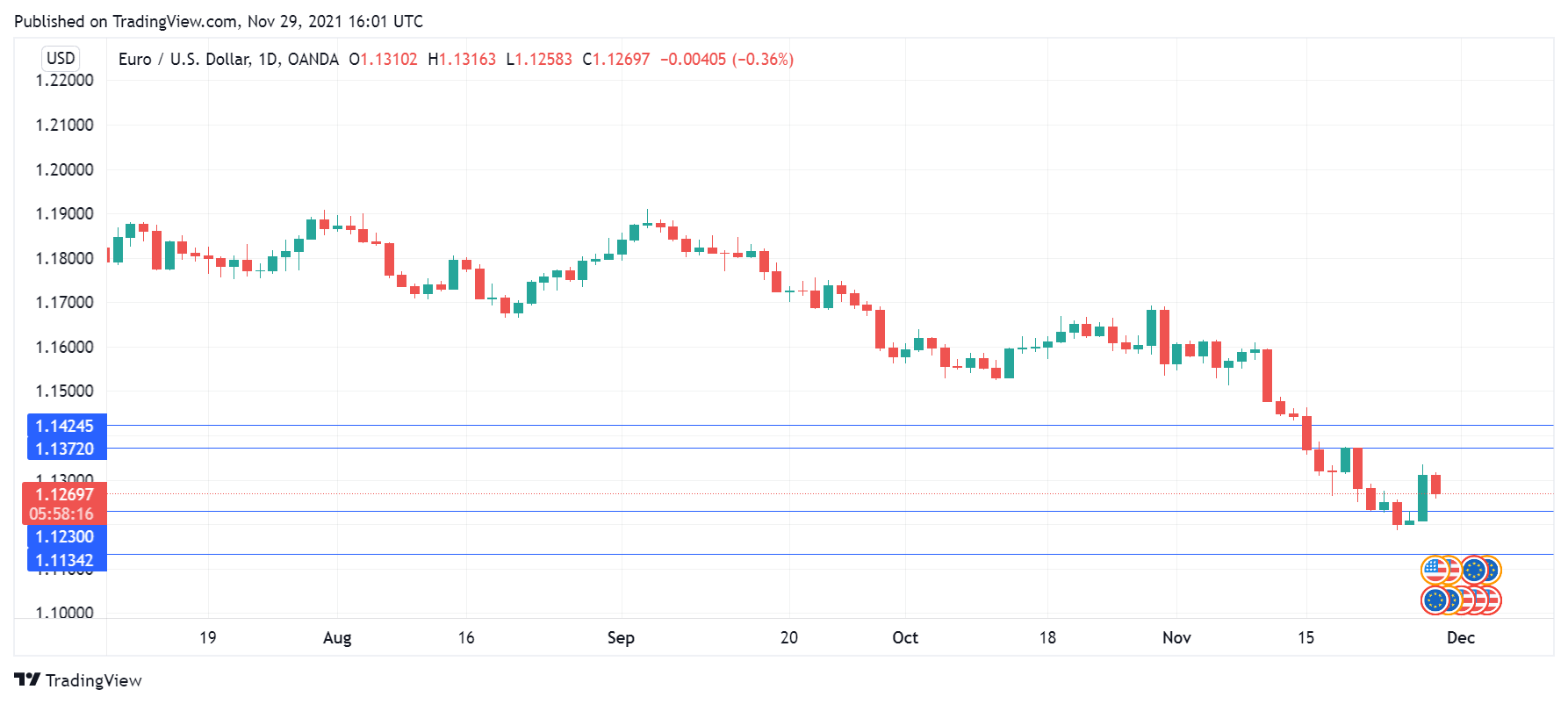The euro was in negative territory on Monday, giving up some of Friday’s huge gains. In the North American session, EUR/USD was trading at 1.1268, down 0.36% on the day.
Uncertainty led to panic in the financial markets last week, as the Omicron variant of COVID-19 was detected outside of South Africa, leading to fears that the variant could cause a massive spike in COVID cases. This led to the US dollar losing ground on Friday to the traditional safe-havens, the Swiss franc and the Japanese yen. The euro also posted impressive gains, climbing 0.90%, its best one-day gain in 2021.
Despite Friday’s strong performance, the outlook for the euro remained bearish. Let’s not forget that the EUR/USD has fallen 2.50% in November and has not had a winning month since July. The currency will likely struggle to make progress above the 1.13 line, barring a collapse in US Treasury yields.
Even without the headache of the spread of Omicron, Europe was in the midst of a fourth wave of COVID, and the massive spike in cases in Germany and elsewhere could derail the EU’s tenuous recovery. Things were looking rosy until now, with the EU forecasting a strong 5% growth rate for 2021, but that projection was in jeopardy as lockdowns were looking more likely around the normally busy Christmas shopping season.
The Omicron variant has made a splash for only a few days, but already a Fed President has weighed in on this latest COVID development. On Friday, Atlanta Federal Reserve President Raphael Bostic said he remained open to accelerating the pace of the Fed’s bond taper as well as one or two rate hikes in 2022. Bostic noted that previous variants had caused less economic damage than the Delta variant and remained hopeful that the US economy would carry through the next wave of the pandemic.

EUR/USD Technical
- EUR/USD had support at 1.1229. This was followed by support at 1.1135
- There was resistance at 1.1373 and 1.1423
